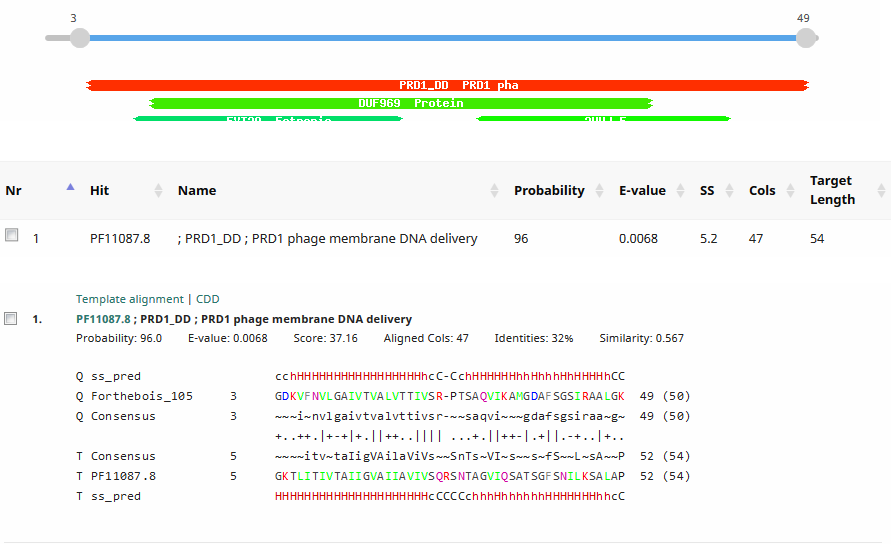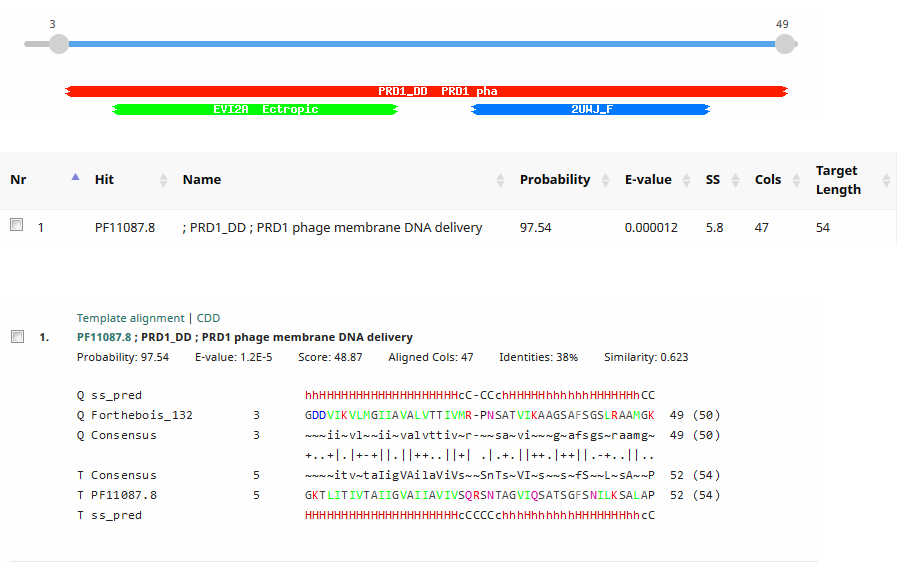Welcome to the forums at seaphages.org. Please feel free to ask any questions related to the SEA-PHAGES program. Any logged-in user may post new topics and reply to existing topics. If you'd like to see a new forum created, please contact us using our form or email us at info@seaphages.org.
Recent Activity
DNA delivery
| Link to this post | posted 15 Feb, 2019 12:53 | |
|---|---|
|
|
We would like to add the gene function “DNA delivery” (or equivalent wording to that effect) to the official functions list. This is the function assigned to the Tectivirus Enterobacteria phage PRD1 p32 and p34. It is also a function commonly assigned in Tectiviridae. Please see: Jalasvuori M, Koskinen K. 2018. Extending the hosts of Tectiviridae into four additional genera of Gram-positive bacteria and more diverse Bacillus species. Virology 518:136–142. PMID: 29481984 We identified this function in Streptomyces phage Forthebois gp22 and gp28 by HHPred to PRD1 p32 and p34. The functions of PRD1 p32 and p34 are described here: Grahn AM, Daugelavicius R, Bamford DH. 2002. The small viral membrane-associated protein P32 is involved in bacteriophage PRD1 DNA entry. J Virol 76:4866–72. PMID: 11967303 “The amino acid sequence of P32 shows characteristic elements for integral membrane proteins. According to the orientation of the predicted ɑ-helix, the topology of protein P32 would be such that the N-terminal part spans the membrane, leaving the bulk of the protein (C terminus) in the cytoplasmic side of the CM. If our model of a clathrin-like engulfment of the phage membrane from the host cytoplasmic membrane during particle assembly is valid, the C terminus of P32 would face outward on the virus membrane surface… Sequence analysis revealed another interesting feature, a close similarity of P32 to another small phage membrane protein, P34 (Fig. 5). This is a second example of a high level of sequence similarity between two PRD1 gene products, suggesting a single gene origin for the two elements.” Saren A-M, Ravantti JJ, Benson SD, Burnett RM, Paulin L, Bamford DH, Bamford JKH. 2005. A snapshot of viral evolution from genome analysis of the tectiviridae family. J Mol Biol 350:427–40. PMID: 15946683 “The known PRD1 genes encode replication (P1, P vertex and injected into the host cell through a tubular structure derived from the viral membrane.” “High conservation occurs in the DNA polymerase encoding sequence (gene I), except close to the gene end. This is also the case with the region encoding the carboxyl terminal end of the packaging ATPase (gene IX), the regions coding for the small membrane protein linking the packaging vertex to the membrane (gene XXII), the coat protein (gene III), and the small membrane proteins important for DNA delivery (genes XVIII, XXXII, XXXIV).” >PRD1_p32 MGEFGKTLITIVTAIIGVAIIAVIVSQRSNTAGVIQSATSGFSNILKSALAPII >PRD1_p34 MNDFVGPIVTVLTAIIGVAILAVLVSRNSNTAGVIKAGSGGFSSMLGTALSPVTGGTGFAMTNNYSGF >Forthebois_gp22 MNGDKVFNVLGAIVTVALVTTIVSRPTSAQVIKAMGDAFSGSIRAALGKZ >Forthebois_gp28 MKGDDVIKVLMGIIAVALVTTIVMRPNSATVIKAAGSAFSGSLRAAMGKZ Forthebois gp22  Forthebois gp28  
|
| Link to this post | posted 15 Feb, 2019 13:36 | |
|---|---|
|
|
Hi Steve, Let's go with "phage membrane DNA delivery"; and i am going to make a note that it is restricted to the tectiviridae for now. |
| Link to this post | posted 15 Feb, 2019 13:41 | |
|---|---|
|
|
Sounds good. Thanks! Steve |


